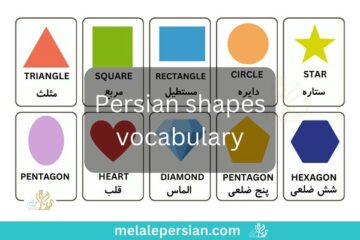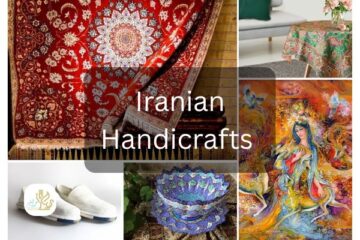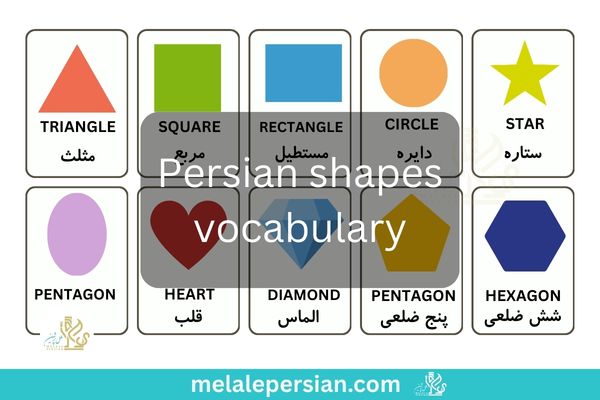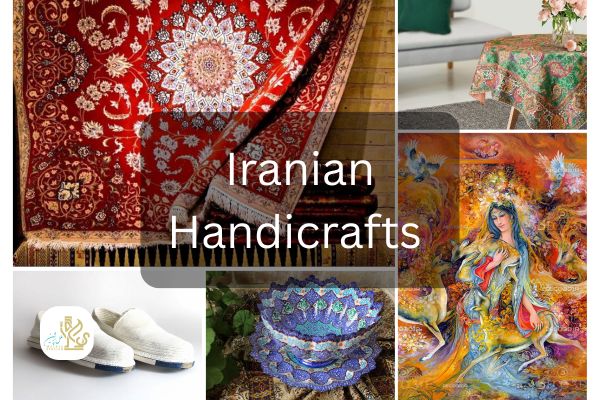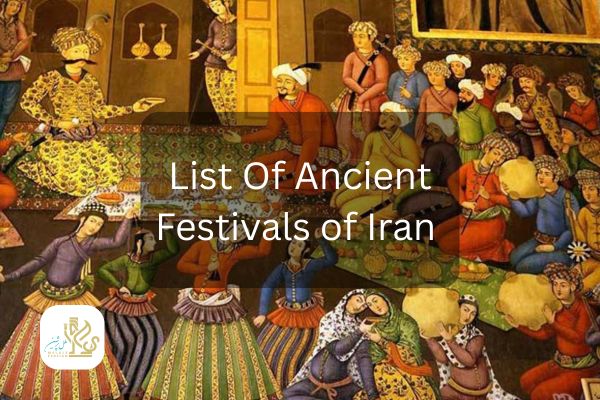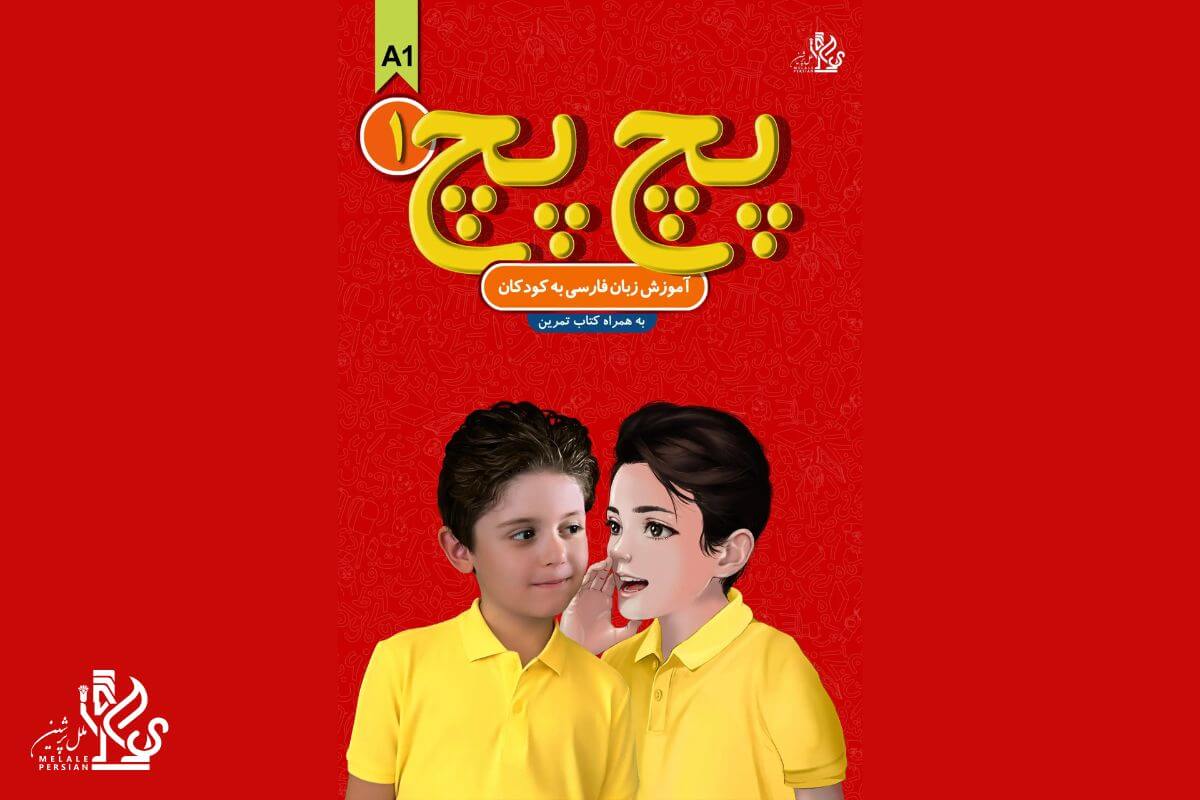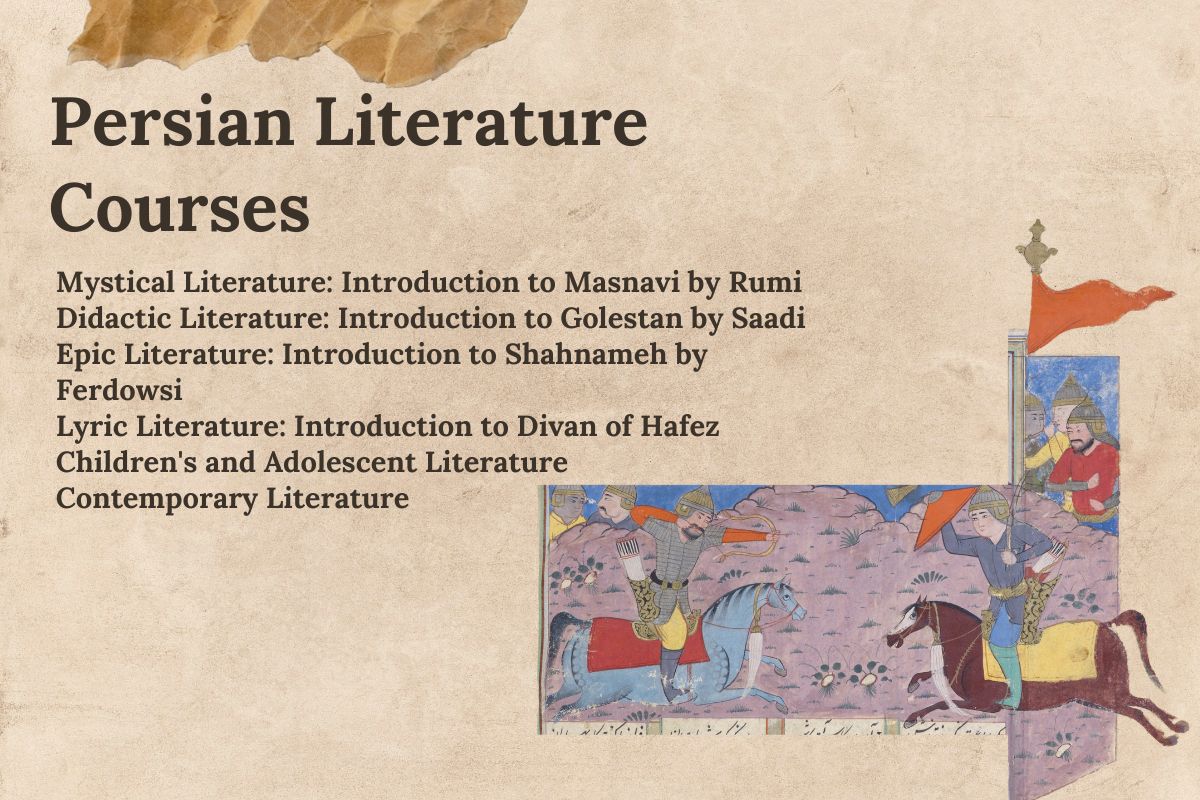
Introduction to Persian Colors
Persian colors have played an essential role in Iran’s culture and history as well. The colors, besides being characteristic of Iranian art and architecture, also carried meaning. In the course of this article, we shall embark upon a thrilling trip through the history and symbolism of Persian colors as well as exploring their use within Iranian culture.
List of Persian Colors
- Persian Blue
- Persian Green
- Persian Rose
- Persian Pink
- Persian Plum
- Persian Red
- Persian Orange
Persian Colors Symbolism
Persian colors carry deep symbolic meanings of the country’s culture and history. Each color has its own significance and has been widely used in Iranian art and architecture. Next, we will explore some of these colors and their symbolism.
Persian Blue

Persian Blue is a deep, dark blue that has been an integral part of Persian culture and art for millennia. It is the imperial colour most regularly connected with the beautifully glazed Persian mosques, which present a sense of divinity, wisdom, and spaciousness of heaven. Persian Blue is used across Persian architecture, ceramics, fabrics, and miniatures.
Historically, the earliest known use of the Persian Blue is English, having appeared in 1669. Throughout history, many other names including Carbon Blue, Iranian Blue, and Shawl Blue have described the dye.
Interestingly, Persian Blue is not just a single shade; it consists of three distinct variations:
- Ordinary Persian Blue – A standard deep blue shade.
- Azure Persian Blue – A slightly lighter, sky-like blue.
- Turquoise Persian Blue – A vibrant blue-green hue with strong historical significance.
Common Uses:
- Persian tilework and mosque decorations
- Miniature paintings
- Persian carpets and textiles
- Traditional Persian clothing
- Pottery and ceramic art
Historical Significance:
Persian Blue was also employed noticeably in Persian architecture, particularly in Timurid and Safavid times, when it enveloped mosques, palaces, and symbols of culture. The color had a symbolic association with spirituality and was normally found with gold and white to have a heavenly kind of visual loveliness.
Persian Blue Color Details:
| Color Name | Hex Code | RGB Code | CMYK Code | HSV Code | First Recorded Use | Symbolism | Key Applications |
|---|---|---|---|---|---|---|---|
| Persian Blue | #1C39BB | (28, 57, 187) | (85%, 70%, 0%, 27%) | (231°, 85%, 73%) | 1669 | Wisdom, spirituality, sky, ocean | Tilework, carpets, art, architecture |
Persian Blue remains a vital part of Persian culture, symbolizing elegance, tradition, and artistry. Even in modern design, it continues to inspire fashion, home décor, and Persian-inspired artwork.
Persian Green

Persian Green is a rich, deep shade of green with hints of gray and blue. This color symbolizes life, nature, growth, fertility, and spirituality in Persian culture. It has been an essential element in traditional Persian art and architecture and continues to be widely used in modern design, fashion, and handicrafts.
Common Uses:
- Architecture & Tilework: Many Persian mosques and religious sites feature Persian Green combined with turquoise and blue tiles.
- Handicrafts & Jewelry: This color appears in Persian turquoise jewelry, enamelwork, and Khatam (marquetry).
- Textiles & Fashion: Persian Green is a common shade in traditional Persian clothing and modern fashion, symbolizing tranquility and elegance.
- Persian Carpets: Many Persian rug designs incorporate Persian Green to create a natural and harmonious aesthetic.
Historical Significance:
Green has long been a symbol of paradise, divinity, and serenity in Persian culture. Persian poets have frequently used this color to describe the beauty of nature. In Persian architecture, Persian Green tiles are often found in mosques, shrines, and historical monuments to evoke a sense of peace and grandeur.
Persian Green Color Details:
| Color Name | Hex Code | RGB Code | CMYK Code | HSV Code | First Recorded Use | Symbolism | Key Applications |
|---|---|---|---|---|---|---|---|
| Persian Green | #00A693 | (0, 166, 147) | (100%, 0%, 11%, 35%) | (173°, 100%, 65%) | 19th Century | Nature, spirituality, tranquility | Architecture, fashion, art |
This timeless shade remains one of the most beloved colors in Persian design, influencing everything from home décor and graphic design to contemporary fashion and modern art.
Persian Rose

Persian Rose is a vibrant and striking shade of pink that exudes elegance, passion, and vitality. Inspired by the beautiful Iranian Damask roses used in making rosewater (Golab), this color has deep cultural and historical significance in Persian traditions, particularly in perfumery, textiles, and decorative arts.
Common Uses:
- Perfumery & Cosmetics: Persian Rose is closely linked to rosewater production, an essential ingredient in Persian perfumes and skincare products.
- Textiles & Fashion: A popular color in Persian silk fabrics, traditional dresses, and accessories, symbolizing femininity and grace.
- Persian Carpets & Tiling: Frequently used in intricate Persian rug designs and Qajar-era tilework.
- Decorative Arts: Found in Persian miniatures, paintings, and calligraphy, adding a sense of warmth and richness.
Historical Significance:
The first recorded use of Persian Rose in the English language dates back to 1922. Persian poets have often referenced the rose as a metaphor for love, beauty, and the transient nature of life. The Persian Rose color continues to be a major influence in Persian aesthetics, particularly in luxury goods and high fashion.
Persian Rose Color Details:
| Color Name | Hex Code | RGB Code | CMYK Code | HSV Code | First Recorded Use | Symbolism | Key Applications |
|---|---|---|---|---|---|---|---|
| Persian Rose | #FE28A2 | (254, 40, 162) | (0%, 84%, 36%, 0%) | (325°, 84%, 99%) | 1922 | Love, passion, beauty | Fashion, textiles, cosmetics, art |
This bright and bold shade of pink remains a popular choice in Persian-inspired design, influencing modern beauty trends, artistic expressions, and luxury fashion pieces.
Persian Pink

Persian Pink is a soft, delicate pink with subtle purple undertones, creating a gentle and elegant tone. It is often associated with romance, refinement, and grace. This color is commonly seen in Persian art, especially in tilework, carpets, and traditional textiles. Persian Pink has been a prominent color in Iranian fashion and interior design, reflecting beauty and serenity.
Common Uses:
- Interior Design: Persian Pink is used in traditional Persian home decor to add a sense of elegance and tranquility.
- Textiles and Carpets: It is a popular choice in the weaving of Persian carpets, where it symbolizes soft beauty and luxury.
- Fashion and Accessories: Frequently seen in traditional Persian garments, scarves, and jewelry, Persian Pink conveys both sophistication and femininity.
- Art and Ceramics: Used in Persian ceramics and miniature paintings, the color evokes delicate beauty in Iranian art forms.
Historical Significance:
First recorded in the English language in 1923, Persian Pink quickly became recognized for its delicate, refined aesthetic. It was widely used during the Qajar dynasty and remains a prominent color in contemporary Persian design. This shade is considered a symbol of tranquility, often used in spiritual and royal contexts to represent grace and beauty.
Persian Pink Color Details:
| Color Name | Hex Code | RGB Code | CMYK Code | HSV Code | First Recorded Use | Symbolism | Key Applications |
|---|---|---|---|---|---|---|---|
| Persian Pink | #F77FBE | (247, 127, 190) | (0%, 49%, 23%, 3%) | (325°, 49%, 97%) | 1923 | Grace, elegance, beauty | Interior design, fashion, carpets, art |
The color Persian Pink continues to influence modern design trends and is often used in creating timelessly elegant works of fashion and art.
Persian Plum

Persian Plum is a deep, rich shade of purple, often infused with reddish undertones. It evokes a sense of luxury, warmth, and refinement. This color is reminiscent of the vibrant hues of ripe plums, and it has been used extensively in Persian art, carpet weaving, and ceramics. Persian Plum symbolizes nobility and opulence, making it a favorite in royal and high-class settings.
Common Uses:
- Interior Design: Persian Plum is used in luxurious interiors to create an atmosphere of richness and warmth. It adds a touch of sophistication when paired with gold or silver accents.
- Fashion and Textiles: Persian Plum is a popular color in traditional Persian clothing, including robes, shawls, and scarves, where it conveys a sense of elegance and grandeur.
- Carpet Weaving: A prominent color in Persian carpets, Persian Plum represents nobility and luxury, often seen in intricate patterns and designs.
- Ceramics and Pottery: Used in Persian ceramics, this color adds depth and richness to vases, bowls, and tiles.
Historical Significance:
Persian Plum was widely used during the Safavid and Qajar dynasties to symbolize wealth and nobility. It continues to be an important color in Persian culture, representing royal elegance. Persian Plum remains a symbol of luxury in both art and modern design.
Persian Plum Color Details:
| Color Name | Hex Code | RGB Code | CMYK Code | HSV Code | First Recorded Use | Symbolism | Key Applications |
|---|---|---|---|---|---|---|---|
| Persian Plum | #701C1C | (112, 28, 28) | (0%, 75%, 75%, 56%) | (0°, 75%, 44%) | Not Specified | Nobility, wealth, luxury | Interior design, fashion, carpets, ceramics |
Persian Plum remains an important shade in traditional and modern design, often used to convey luxury and prestige.
Persian Red

Persian Red is a vivid, warm shade of red, with a slightly orange undertone. It is inspired by the red soil found in the Hormuz region of Iran, making it a unique and significant color in Persian culture. Persian Red is associated with energy, passion, and vitality, often used to symbolize life, strength, and bravery.
Common Uses:
- Persian Carpets: Persian Red is a signature color in the world of Persian carpet weaving. It is used in intricate patterns to represent vitality and passion.
- Pottery and Ceramics: This rich red hue is commonly found in Kerman pottery, where it is used to create beautiful, decorative artifacts.
- Textiles and Fashion: Persian Red has been used in traditional Persian clothing, especially in royal garments and ceremonial attire, where it signifies power and prestige.
- Artwork and Decoration: Persian Red is often seen in paintings, mosaics, and tilework, where it adds vibrancy and intensity to the design.
Historical Significance:
Persian Red has been in use for centuries, especially in the Safavid dynasty, where it was used to create royal garments and decorative items. The color became a symbol of prosperity and luxury in Persian culture. Persian Red was also referenced in Western art after its first documented use in 1895, and it continues to be a popular shade in contemporary Persian-inspired designs.
Persian Red Color Details:
| Color Name | Hex Code | RGB Code | CMYK Code | HSV Code | First Recorded Use | Symbolism | Key Applications |
|---|---|---|---|---|---|---|---|
| Persian Red | #C81D11 | (200, 29, 17) | (0%, 85%, 91%, 22%) | (0°, 91%, 78%) | 1895 | Vitality, strength, passion | Carpets, pottery, textiles, artwork |
Persian Red remains an enduring symbol of strength and vitality, used in both traditional and modern Persian art and design to evoke a sense of richness and emotion.
Persian Orange

Persian Orange is a warm, rich, and earthy orange color that draws its roots from the Hormuz region of Iran. It is characterized by its deep ochre tones, which are derived from the iron oxide in the soil of the area. Persian Orange embodies energy, enthusiasm, and creativity, often evoking feelings of warmth and invitation.
Common Uses:
- Carpet Weaving: Persian Orange is often found in the vibrant patterns of Persian carpets, contributing to the bold, dynamic designs that have become synonymous with Persian art.
- Pottery and Ceramics: This color is widely used in Persian pottery to create warm and earthy tones that complement the intricate, handmade designs.
- Textiles and Clothing: Persian Orange has also been utilized in traditional Persian textiles, often seen in clothing, accessories, and decorative items.
- Architectural Decoration: The warm and welcoming tone of Persian Orange is often used in the decoration of historical buildings and mosques, where it symbolizes hospitality and positivity.
Historical Significance:
Persian Orange has a deep connection with the history of Iranian culture, especially in the trade routes of the Silk Road. The orange fruit, which originated in Iran, was transported through these routes to China and eventually to the West. Persian Orange became an important color used in Iranian dyeing practices and carpet weaving as a reflection of the natural resources and landscape of the region.
Persian Orange Color Details:
| Color Name | Hex Code | RGB Code | CMYK Code | HSV Code | First Recorded Use | Symbolism | Key Applications |
|---|---|---|---|---|---|---|---|
| Persian Orange | #D99058 | (217, 144, 88) | (0%, 34%, 59%, 15%) | (30°, 59%, 85%) | Ancient times | Creativity, warmth, energy | Carpets, pottery, textiles, architecture |
Persian Orange has remained a symbol of warmth and hospitality throughout Persian history. Its rich and inviting hue continues to inspire designers and artists, making it a staple color in modern and traditional Persian-inspired artworks.
Conclusion:
Persian colors are deeply rooted in Iran’s rich history and culture. From the iconic Persian Blue to the vibrant Persian Red, these colors have been used in various art forms such as carpet weaving, pottery, and tilework. They symbolize a range of meanings, from spirituality to warmth and wisdom. These timeless colors continue to influence both traditional and modern design, reflecting the enduring beauty of Persian heritage.




